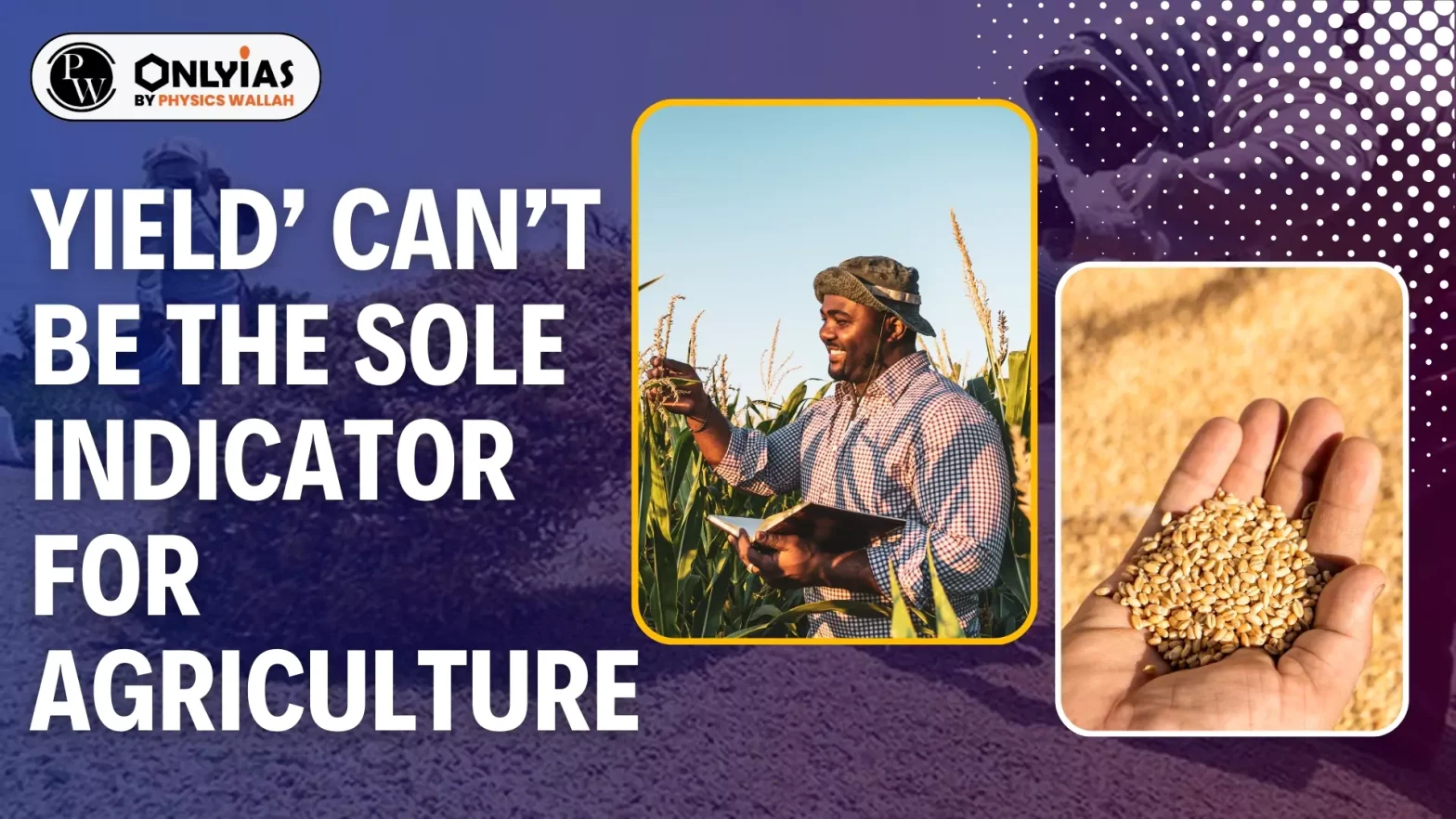In the face of climate change, agriculture’s success must shift from merely maximising yield to also improving nutrition, sustaining livelihoods, enhancing biodiversity, and safeguarding the environment.
| Yield in agriculture refers to the amount of crop output produced per unit of land, typically measured in kilograms per hectare. It has traditionally been the main metric to assess productivity and efficiency in farming. |
Historical Background
- Ensuring Food Security: In independent India, focusing on yield was crucial for food security and preventing hunger, but this need has evolved.
- Land as a Resource: Historically, yield maximisation centred on the belief that land was the scarcest resource in agriculture, but now other resources are also becoming scarce.
- Emerging Scarcity of Other Resources: Today, the depletion of critical inputs like water, plant nutrition etc. shows that a sole focus on yield is no longer sufficient.
Enroll now for UPSC Online Classes
Negative Impacts of Yield Maximization
- Economic sustainability risks: Focusing solely on maximising crop yields can harm farmers’ economic sustainability. This often leads to diminishing returns and increased costs for inputs like fertilisers.
- Neglect of Nutritional Quality: The pursuit of higher yields has overshadowed the importance of the nutritional quality of food.
- A study by ICAR found that high-yield rice and wheat have lost essential micronutrients, with zinc levels down 33% in rice and 30% in wheat, and iron levels down 27% in rice and 19% in wheat.
- Plant breeders are not required to share the nutritional information of new grain varieties which could be contributing to widespread micronutrient deficiencies.
- Misconception About Income: It’s commonly believed that maximising yields increases farmers’ income, but due to an 80% decline in crop response to fertilisers since the 1970s, farmers must use more inputs to achieve the same yields, raising costs.
- Seasonal Output Limitations: Focusing on yield may boost seasonal outputs but often overlooks the benefits of intercropping, which can enhance overall nutritional output and profits throughout the year.
- A study from Andhra Pradesh showed that intercropping sugarcane with chilli, eggplant, tomato, and coriander provides year-round stable income and enhances profitability.
- Biodiversity Loss: Prioritising a few high-yield seed varieties has led to significant biodiversity loss.
- Since the Green Revolution, India has lost about 104,000 rice varieties, which reduces agricultural resilience, especially in the face of climate change.
- Local varieties often show greater resilience to extreme weather.
- Decline of Nutritious Crops: The emphasis on high-yield crops has led to a decline in resilient and nutritious options, like millets, which have lost 10 million hectares of cultivation since the 1950s.
- Meanwhile, rice and wheat have gained significant land, reducing dietary diversity and contributing to micronutrient deficiencies.
- Persistent Hunger and Malnutrition: Despite increases in food production, India ranks low at 105 on the Global Hunger Index, indicating issues with food security.
- Hidden hunger persists, with 35% of children stunted and two-thirds affected by anaemia.
Suggestions for a Holistic Agricultural Approach
- Collaborative Indicator Development: Agriculture indicators should be created together by the Ministries of Health, Agriculture, Water, and Environment to reflect the interconnectedness of food systems and natural resources.
- Outcome-Focused Metrics: Indicators must directly measure outcomes like nutritional security, such as nutritional output per hectare annually.
- Mainstreaming Critical Metrics: Include metrics for soil biological activity, water-use efficiency, and farm biodiversity in standard assessments, like soil organic carbon in health cards.
- Innovative Projects: Initiatives like the AI-powered ‘Saagu Baagu’ in Telangana improve water-use efficiency and biodiversity through real-time data for irrigation and crop management.
- Comprehensive Diversity Measurements: Evaluate both farm-level crop diversity and implement a ‘Landscape Diversity Score’ to assess regional diversity and income diversification, enhancing resilience against price shocks and pest attacks.
Check Out UPSC NCERT Textbooks From PW Store
Conclusion
We must shift from solely maximising yields to prioritising nutritional quality, biodiversity, and resource sustainability in agriculture. This holistic approach ensures a resilient food system that supports health, livelihoods, and environmental protection for future generations.
![]() 16 Oct 2024
16 Oct 2024

